Back in 2008, Cadillac ran an advertisement where Kate Walsh asked, "When you turn your car on, does it return the favor?"
I'm not usually in the habit of thinking about nearly decade-old ads, but I was immediately reminded of that one when I first booted up the OLED variant of the Lenovo ThinkPad X1 Yoga. When you turn on this PC, it will return the favor.
But we'll come back to just how beautiful the display looks. I'm really wondering if this is the perfect laptop. It's a 360-degree convertible with a built-in pen, 16GB RAM, 512GB SSD, and a ton of ports.
It uses a seventh-generation Core i7, and I thought that it would be held back by the fact that it uses Intel HD Graphics 620, but it's not. While on business trips, I was able to play Cuphead - which ran a lot better than a machine that I brought with a GTX 1050 - and edit videos without a problem.
Specs
| CPU | Up to i7-7600U Intel Core i7 processor |
|---|---|
| Graphics | Intel HD Graphics 620 |
| Display |
14" WQHD OLED (2560 x 1440) Touch 300 nits |
| Body | 13.11x9.02x0.69 inches; 333x229x17.4mm, 2.99 pounds |
| RAM |
16GB 1866MHz LPDDR3 |
| Storage | 512GB SSD |
| Ports |
2 x Intel Thunderbolt 3, 3 x USB 3.0, HDMI, Native RJ45, MicroSD, MicroSIM |
| Windows Hello | Fingerprint |
| Software | Windows 10 Pro |
| Price | $2,429.10 |
Pricing is based on Lenovo.com and the specs in the review unit that I was provided. It's also available with a Core i5 or a lower Core i7 model, less RAM, more or less storage, among other configurations. In other words, the price will vary based on the spec that you choose.
Day one
That OLED display
Wow. Just wow. Not only is the 1440p OLED panel on the X1 Yoga absolutely beautiful, but I've just been spoiled for other displays. It really is just stunning.
So let's back up a little bit. Most PCs use an LCD panel, or liquid crystal display. While I'm not going to go too deep into it, what you need to know is that the entire panel is backlit, which is why you can still tell that your screen is on even when it's showing all black.
OLED, or organic light-emitting diodes, allows for part of the display to be turned off, meaning you get true blacks. That's why in the video above, you can't really see where the screen ends and the bezel begins. OLED displays also usually have more vibrant colors, just as this one does.

There is a downside to OLED though, as they are subject to burn-in after prolonged usage. Obviously, I haven't had this machine for long enough to really know how quickly it will degrade, but I assume that Lenovo used quality parts, as it certainly looks like a high-quality OLED panel. Nevertheless, I set up a screensaver anyway, and yes, those settings do still exist in Windows 10.
I also think that the size and resolution of the screen are just perfect. If you've read my review of the 1080p LCD ThinkPad X1 Yoga, then you know that I think that 1440p is the sweet spot for ultrabooks, where 1080p isn't enough and 4K drains the battery too much. 14 inches isn't too big to make it bulky, nor is it too small for getting your work done.
But ultimately, the display is the thing on your PC that you'll look at for the entire time that you're using it, and this certainly makes for a pleasant experience.
Design
Just like all of Lenovo's ThinkPads, the X1 Yoga is made of a carbon fiber material. I've always been a fan of this, because it's something different in a world that's filled with MacBook and Surface clones. I also like the feel of the material; it's better than if they used some weird fabric, like Alcantara or something.
The OLED model comes in at just under three pounds, while the LCD variants are slightly heavier. At about two-thirds of an inch thick, it's quite comfortable to carry around. It's not too bulky or too heavy. The Yoga just feels right.

Most importantly, there's no shortage of ports on the ThinkPad X1 Yoga. On the left side, you'll find two Thunderbolt 3 ports, along with two more for USB 3.0 Type-A. Both Thunderbolt ports can be used for charging (not at the same time), and one of them should be enough to connect to two 4K displays or one 5K display, although it's doubtful that the Intel GPU can handle all of that.
On the other side is another USB 3.0 Type-A port, HDMI, 3.5mm headset jack, and Mini RJ45. On the back are slots for micro-SD and a micro-SIM card; unfortunately, the micro-SIM card slot doesn't actually do anything since this isn't a cellular model, and the OLED variant doesn't even seem to be offered with a Snapdragon X7 modem.
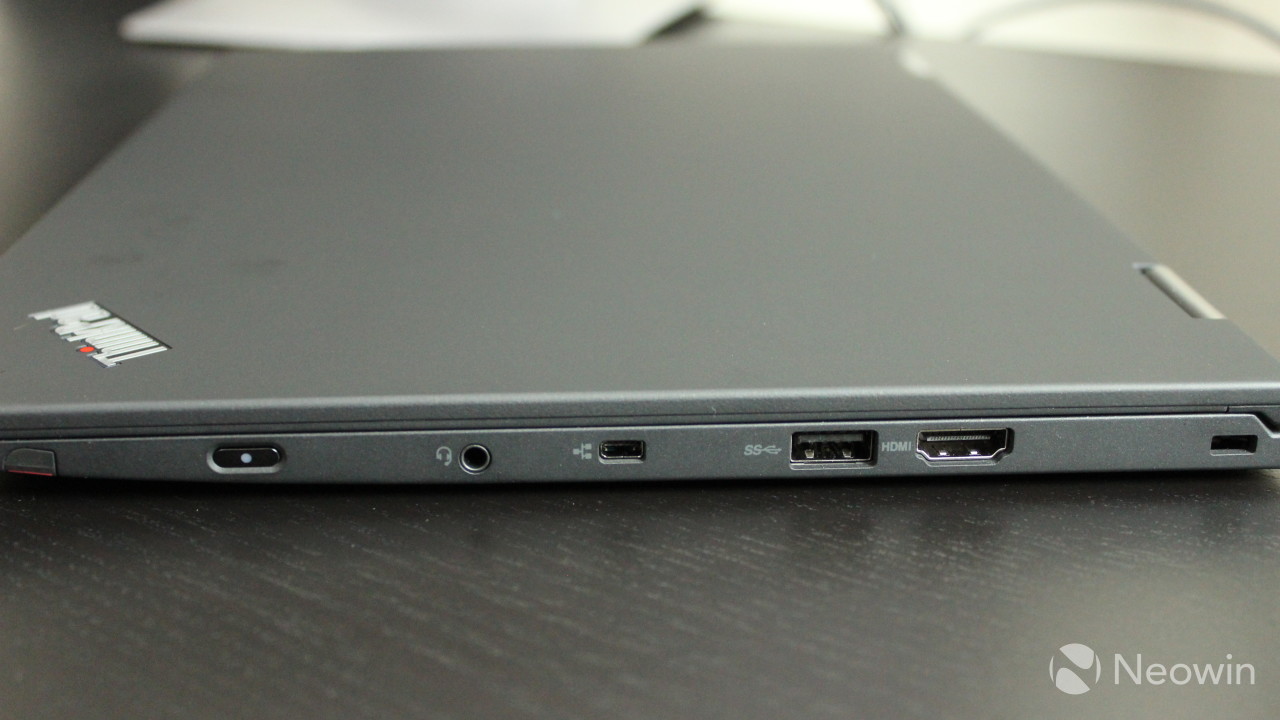
And while it's certainly not a big deal, it feels like a design flaw. Everyone gets a SIM card slot, even if it does absolutely nothing. If I had to wager a guess here, it's easier to manufacture one chassis and use different internals for each machine, allowing for more customization.
The front-facing camera is placed right above the display, which is where you'd expect it to be, unless you're using one of Dell's XPS 13 or 15 machines. Of course, this can make for awkward placement if you're using the 360-degree device in a different form factor, but it's not like it's trying to do facial recognition.
The keyboard is similar to that on pretty much all ThinkPad PCs, with its rounded edges. The trackpad is placed underneath it in the middle, with the fingerprint reader to the right.
Wave Keyboard
Speaking of the keyboard, that's another thing that I just love about the X1 Yoga. The keys feel soft, and pleasant to type on. This is extremely important to me, as I spend so much of my time typing, something that you can probably guess.

It's not too loud either, and I should know since I'm quite the loud typist, as many of my colleagues know. While attending Microsoft's Ignite conference in September, along with other events, this was my go-to device. This was due to the lovely screen, as well as the keyboard.
Other than how nice it feels to type on, one of my favorite keyboard features is that the keys retract when you fold the display forward or backward. This seems like a really simple thing, but it takes care of that minor annoyance when you feel the keys if you're holding the device like a tablet.

It's this kind of attention to minor details that make me really enjoy the ThinkPad lineup, and it's why I prefer them to many other brands.
ThinkPad Pen Pro
The pen is another thing that I love about the X1 Yoga. It's actually stored inside of the machine - similar to a Samsung Galaxy Note device - and you can pop it out whenever you need to use it. This method feels far superior to competing products that use magnets, pen loops, clips that plug into the USB port, or nothing at all.

The ThinkPad Pen Pro also doesn't require a battery; it simply recharges while it's stored inside of the PC. Lenovo says that you can get an 80% charge in just 15 seconds and a full charge after five minutes, but it hardly seems like you'll need to utilize that, unless you rarely have the pen holstered.
I'm a big fan of this method because I'm not a big pen user. For example, if I have an HP Spectre x360 with me, the pen probably isn't, so if someone sends me a document to sign, I'll have to use my finger, like a savage. My other issue with replaceable batteries is that I often only get one use out of them. I'll sign a document, and then the next time I'll use the pen is months later, and it's dead by then.

Of course, having a pen stored inside of the device means that it's smaller and narrower than others. If this makes it uncomfortable for you, you can always grab any third-party Wacom pens, which are available from a number of retailers.
I used the ThinkPad Pen Pro to take handwritten notes throughout the Ignite conference, and I quite enjoyed it. I used the Yoga as a tablet, and just wrote on it. The experience was very comfortable.
Form factors
Since we're on the subject of taking handwritten notes, it's probably best to talk about the varying form factors that a 360-degree device can utilize. Naturally, you can use it as a standard laptop, but the X1 Yoga can do much more.
If you fold the display back by 360 degrees, you can use it as a tablet. As discussed above, the keys retract into the device, making it more comfortable to hold and use without them getting in your way. Obviously, you can pop out the pen and start using Windows Ink features.

Don't get me wrong; Windows 10 generally sucks as a tablet OS. If you try to use any Win32 app, it will be a real pain manually launching the onscreen keyboard and closing it. For productivity and Windows Ink though, it's quite nice.
I use OneNote for Windows 10 for taking those handwritten notes that I keep talking about. It's a great app that keeps getting better, and it's a shining example of what the UWP can offer. Other Windows Ink features include marking up photos, webpages, drawing, marking routes on maps, Sticky Notes, and more.
You can also use it in tent mode, where the machine is propped up like a tent. This, along with folding up the display and placing the keyboard facing down, it great for watching movies, doing presentations, and more. And even if this is your work machine, trust me; you might end up finding yourself watching movies on it.
Windows Hello
The Lenovo ThinkPad X1 Yoga uses a fingerprint reader for Windows Hello, and I guess that makes sense given the various form factors that you can use it in. And yes, the fingerprint reader still works when the display is folded back into tablet mode.

I do prefer facial recognition on a laptop form factor though. When using devices like Microsoft's Surface Book or HP's Spectre x360, it's really nice how the device wakes up, sees you, and logs you in before you even have to think about typing a password or PIN. And it's not unheard of to use both, as we've seen from the latest round of Spectres from HP.
Of course, we can't have everything, and a fingerprint reader is still better than no Windows Hello at all. I've found the accuracy of the reader to be inconsistent, and frustrating at times, but for the most part, it works.
Battery life
Naturally, battery life is an important factor when it comes to any portable device, and you shouldn't be surprised to hear that the 1440p OLED model doesn't perform as well as the 1080p LCD variant, despite the fact that OLED displays tend to not be as hard on the battery, with the ability to turn off pixels. But as I also mentioned earlier, it's not as bad as many 4K laptops that you'll find on the market.
In my day-to-day usage, the OLED ThinkPad X1 Yoga gets at least six full hours of battery life, and that's a conservative estimate. You can definitely stretch it over eight hours if you use the Edge browser and other UWP apps, and you turn down the brightness of the display.
My usage generally includes having a bunch of Chrome tabs open at all times, OneNote for Windows 10 when inking or OneNote 2016 when typing, some light Photoshop, the desktop Skype app, Slack, and the Amazon Music app. I've even used Adobe Premiere Pro to compile videos and PCMark 8 to benchmark, and when you start going into tasks like that, six hours is generous.
In other words, expect about six hours of battery life with mixed usage.
As with most modern ultrabooks, the ThinkPad X1 Yoga charges via a 65W USB Type-C cable. I love this, as it allows me to use the same charger for a variety of PCs. The days of proprietary power cables seem to be behind us.
It charges pretty fast too, as you can get it up to 80% in an hour. As with all fast charging technologies, that last 20% will take longer.
Performance
The performance of the X1 Yoga - much like the rest of the machine - far exceeded my expectations. This unit has a Core i7-7600U processor, which means that it's a dual-core, seventh-generation 'Kaby Lake' chip. The U-series is the standard low power processor that you'll find in most ultrabooks, although the new eighth-generation chips are quad-core.
But that model also comes with Intel HD Graphics 620, whereas something like the Core i7-7660U would come with Intel Iris Plus 640 and an increase in performance. HD Graphics 620 is very common in laptops, and I've always found it to be just alright.
That's why I was surprised to see that it handled a game like Cuphead, which obviously doesn't require a lot of GPU power, better than a laptop that has an Nvidia GeForce GTX 1050 in it. Editing a 1080p 60fps video in Premiere Pro went great as well.
For benchmarks, I used PCMark 8. There are three tests: Home, Creative, and Work. First up is Home, which tests regular use cases like writing, casual gaming, web browsing, and more.


As you can see, the Yoga comes in at better than 51% of all results, which is pretty impressive. Next up is Creative, which checks things like video group chat, advanced photo editing, mainstream gaming, video editing, and more.


As you can see, the results are even more impressive. Finally, the Work test checks productivity-related tasks, like web browsing, video chat, writing, and spreadsheets.


Once again, the numbers came out in the ThinkPad X1 Yoga's favor.
Conclusion
It's really just so hard to think of anything to complain about with the ThinkPad X1 Yoga. It's really just a wonderful machine, and having used the 1080p model and knowing the benefits of OLED, it still exceeded my expectations. Perhaps, we can focus on the lack of a facial recognition camera and the price as subjects to complain about.

Sure, at over $2,400, this is a pretty expensive PC. But then again, it's damn near perfect. I really can't say enough about just how beautiful and stunning the OLED display is, and I love the built-in pen and the retractable Wave Keyboard.
Performance is surprisingly strong as well. As I noted earlier, I've used this machine to play games and edit videos, and found that the Yoga worked better than other, more powerful PCs.
Personally, I think the price is totally worth it, because when you turn on the OLED ThinkPad X1 Yoga, it will return the favor.

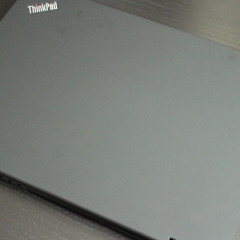
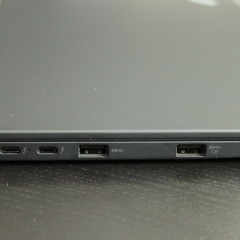
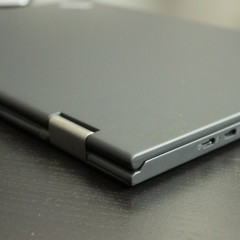




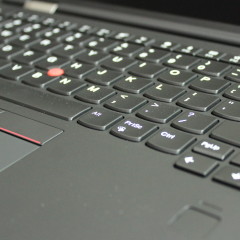


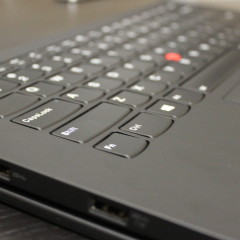
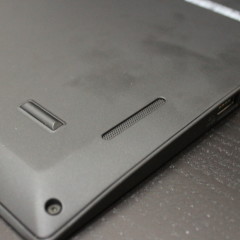
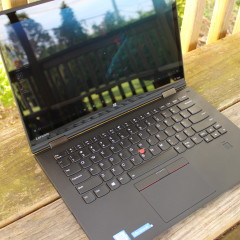

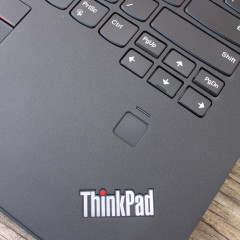
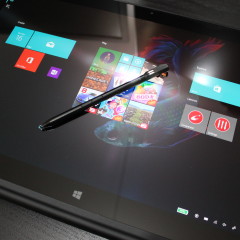

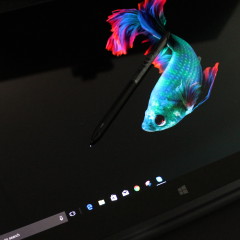

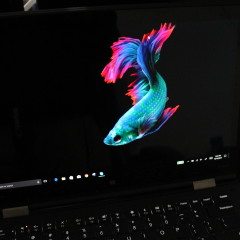










12 Comments - Add comment